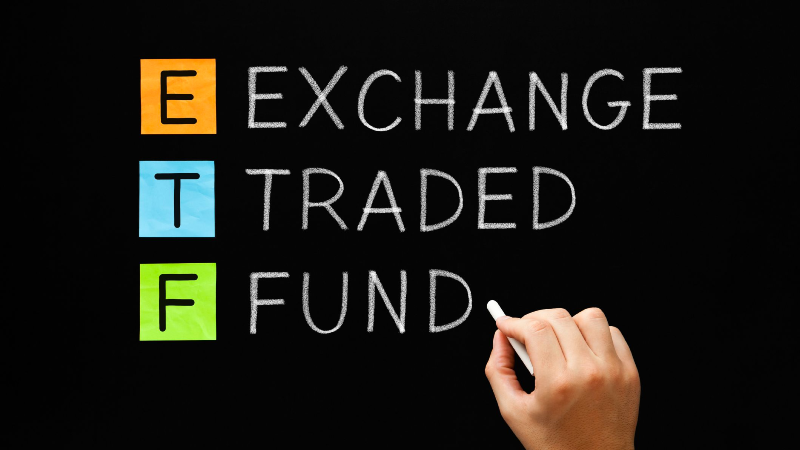ETFs (exchange-traded funds) are a common type of passive investment worldwide. In India, ETF investing is barely getting started. How does an ETF function? The fund AMC supporting the ETF will urge institutions to join their ETF portfolio by purchasing Nifty-based shares (in the case of a Nifty ETF).
The total corpus is then turned into tiny units and offered to retail investors in the same proportion as the Nifty components in the index. These are the units that are exchanged on stock exchanges.
Understand ETFs
ETFs are a form of investment that, unlike a stock, holds many underlying assets. Because an ETF contains numerous assets, it is a popular alternative for diversification. ETFs can thus have a variety of investments, such as stocks, commodities, bonds, or a combination of them.
An ETF could own hundreds or even thousands of equities from various industries, or it may be focused on a single industry or area. Banking-focused ETFs, for example, would own stocks from a variety of banks across the industry.
When do investors use ETFs?
Broad index ETFs are popular among undecided investors about which stock or theme to invest in. This encourages them to remain invested. ETFs have grown in popularity worldwide since they have outperformed actively managed funds in recent years.
Types of ETFs
Passive and Active ETFs
ETFs are divided into two categories: passively managed and actively managed. Passive ETFs are intended to replicate the performance of a broader index, such as the S&P 500, or a more specialised industry or trend. Gold mining stocks are an example from the latter category: there are approximately eight ETFs that specialise on gold mining enterprises as of February 18, 2022, excluding inverse, leveraged, and funds with low assets under management (AUM).
Portfolio managers decide which stocks to include in an actively managed ETF’s portfolio rather than an index of securities. These funds offer advantages over passive ETFs, but they are more costly to investors. Below, we look at actively managed ETFs.
Bond EFTs
Bond ETFs are utilised to give investors with consistent income. The performance of the underlying bonds determines their earnings. Corporate bonds, Government bonds, and state and local bonds, often known as municipal bonds, are examples. Bond ETFs, unlike their underlying assets, have no defined maturity date. They frequently trade at a lower or higher price than the actual bond price.
Stock ETFs
ETFs that track a significant company or sector is called stock (equity) ETFs. A stock ETF might, for instance, track automotive or international stocks. The financial goal is to provide diverse exposure to a particular industry, comprising both high-performing companies and newcomers with growth potential. Unlike stock mutual funds, Stock ETFs feature cheaper costs and do not require actual stock ownership.
Leveraged ETFs
A leveraged ETF attempts to outperform the underlying investments by two or three. For example, if the S&P 500 climbs 1%, a 2 leveraged S&P 500 ETF will return 2%. (and if the index falls by 1 percent, the ETF will lose 2 percent ). These products leverage their gains by using derivatives like options or futures contracts. Inverse ETFs that aim for an inverse compounded return is also available.
How do ETFs work?
The fund provider owns the underlying assets and then creates a fund to track their performance and offers shares in that fund to investors. An ETF’s shareholders own a portion of the fund but not the underlying assets. Nonetheless, ETF investors that track a stock index may receive lump dividend payments or reinvestments for the index’s equities.
While ETF mutual fund are supposed to duplicate the value of an underlying product or index — such as gold or a basket of stocks like the S&P 500 — they trade at business values that are usually not the same as the asset. Furthermore, due to expenditures, an ETF’s long-term returns will differ from those of its underlying value.
The following is a condensed summary of how ETFs work:
- An ETF provider evaluates the entire universe of assets, such as stocks, bonds, commodities, and currencies, and builds a basket, each with its ticker.
- Investors can purchase a share of that basket, just as they would a company’s stock.
- Like a stock, sellers and buyers trade the ETF on an exchange throughout the day.
Final Thoughts
While ETF costs are generally lower, they vary significantly from fund to fund, based on the issuer, complexity, and demand. Even ETFs which track the same index have varying fees.
Most ETFs are index-tracking products that are not actively managed. Some investors choose mutual funds, managed by a professional manager who attempts to outperform the market. Actively managed ETFs are similar to mutual funds, although they have higher costs. So, before you buy, think about your investing style.


